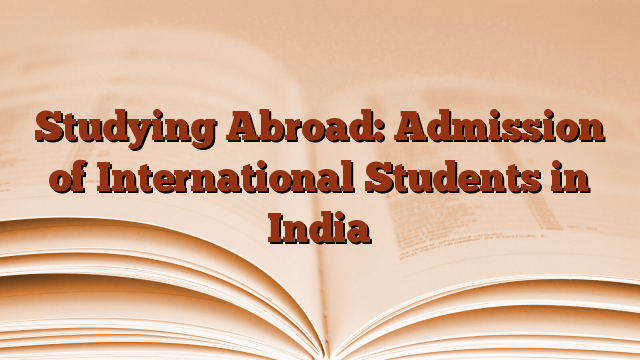India might not be the first country that springs to mind when it comes to higher education abroad, but its education is quickly making a name for itself. According to the United States’ International Institute of Education’s latest annual Open Doors survey, the number of US students in India has increased by 44%, while the number of Indian students – who make up one of the largest groups of international students in the States – down 1% in the US to 104,000. Indian freshmen leaving the west to go to college at home? If so, they would for good reason.
India – the second largest education network in the world with 343 universities and 17,000 colleges – offers a huge variety of undergraduate, graduate, doctoral, professional and vocational degree programs. distance learning is also an extremely viable option: there are 66 distance learning institutions operating in 60 universities and 11 open universities.
Education has a very high priority, which is reflected in the quality of teaching and in the courses and faculties themselves. The institutions are internationally recognized. Many academics who have studied in the leading universities in United States and United Kingdom are either returning or relocating to India due to the prestige of education. As a result, India has emerged as an innovation hub, with multinationals such as General Electric, IBM and Daimler establishing R&D centers in major cities.
India’s GDP is growing rapidly. The domestic industry is already well established – in 2010, Tata Motors became the first car company in the world to produce a $2000 car. The demand for well-trained employees will continue to rise, and with it the level of education. With the acquisition of a university degree, graduates are optimally positioned for starting their careers.
Compared to America and Europe, the cost of living and education is low. This includes course fees, meals, accommodation and even luxury extras like clothing, alcohol and beauty treatments. India’s major cities offer all the leisure activities and diversions that international students would expect from their home countries.
The country is a popular tourist and backpacker destination and there are several low cost airlines offering a fantastic opportunity to explore the subcontinent with ease. As the largest English speaking population in the world, there is no language barrier to contend with. Any international student arriving in India is assured of a warm and friendly welcome from its residents. India is closer to a continent than any other country in the world in terms of size and diversity of culture, landscape and people.
Eligibility: Overseas students and non-resident Indians
International students must have completed at least 12 years of school before they can be admitted to a university.
International students already studying in schools in India can submit their applications up to their Higher Secondary (10+2) or equivalent exam results. After receiving their grade sheet, students should send the results within 10 days to: Student Cell, Room No. 1009, Ministry of Foreign Affairs. Akbar Bhavan. New Delhi.
Direct admission of international students to an engineering, medical (MBBS), dental (BDS) or other medical degree program offered by Publicity institutions is not permitted.
International students can pursue university admissions to the undergraduate programs in Engineering, Medicine (MBBS) and Dentistry (BDS). Private colleges. The number of NRI / PIO / foreign students is limited to a quota. Remaining places will be filled by Indian students.
There is a limited number of places on the MBBS, BDS courses for students from developing countries in Africa, Asia and Latin America where medical degree facilities are either inadequate or unavailable. The exact number and the country-specific assignment vary annually. Students applying for these places must submit their application through the Indian missions abroad or through the diplomatic missions of the respective countries in India.
The academic year in India starts in July/August. All international students seeking admission to schools, Colleges and Universities in India It is recommended to apply early.
Thanks to Dhiraj Sharma | #Studying #Admission #International #Students #India

Leave a Reply